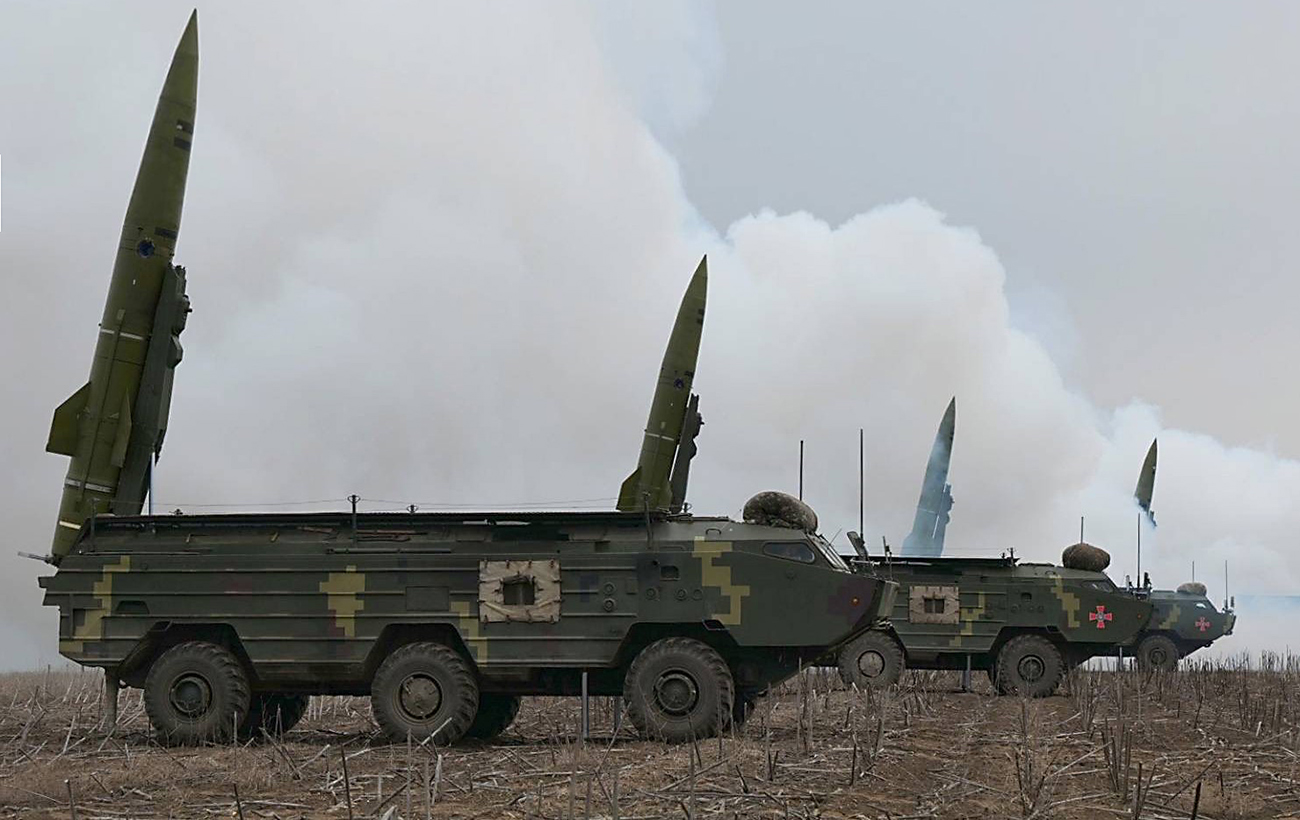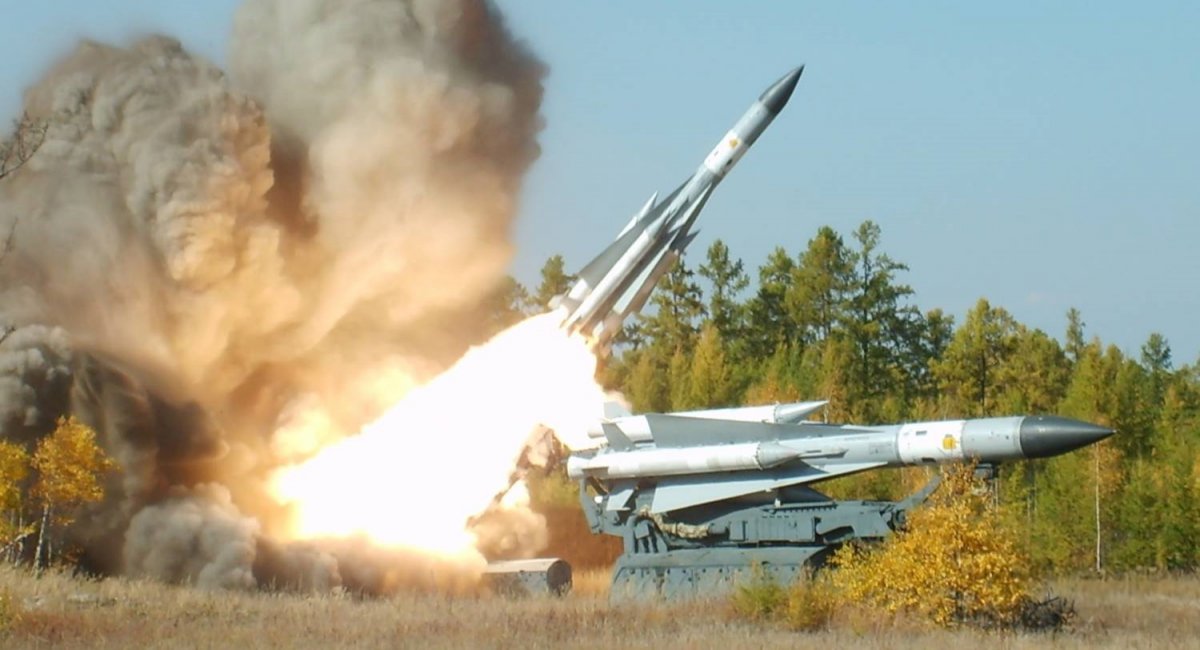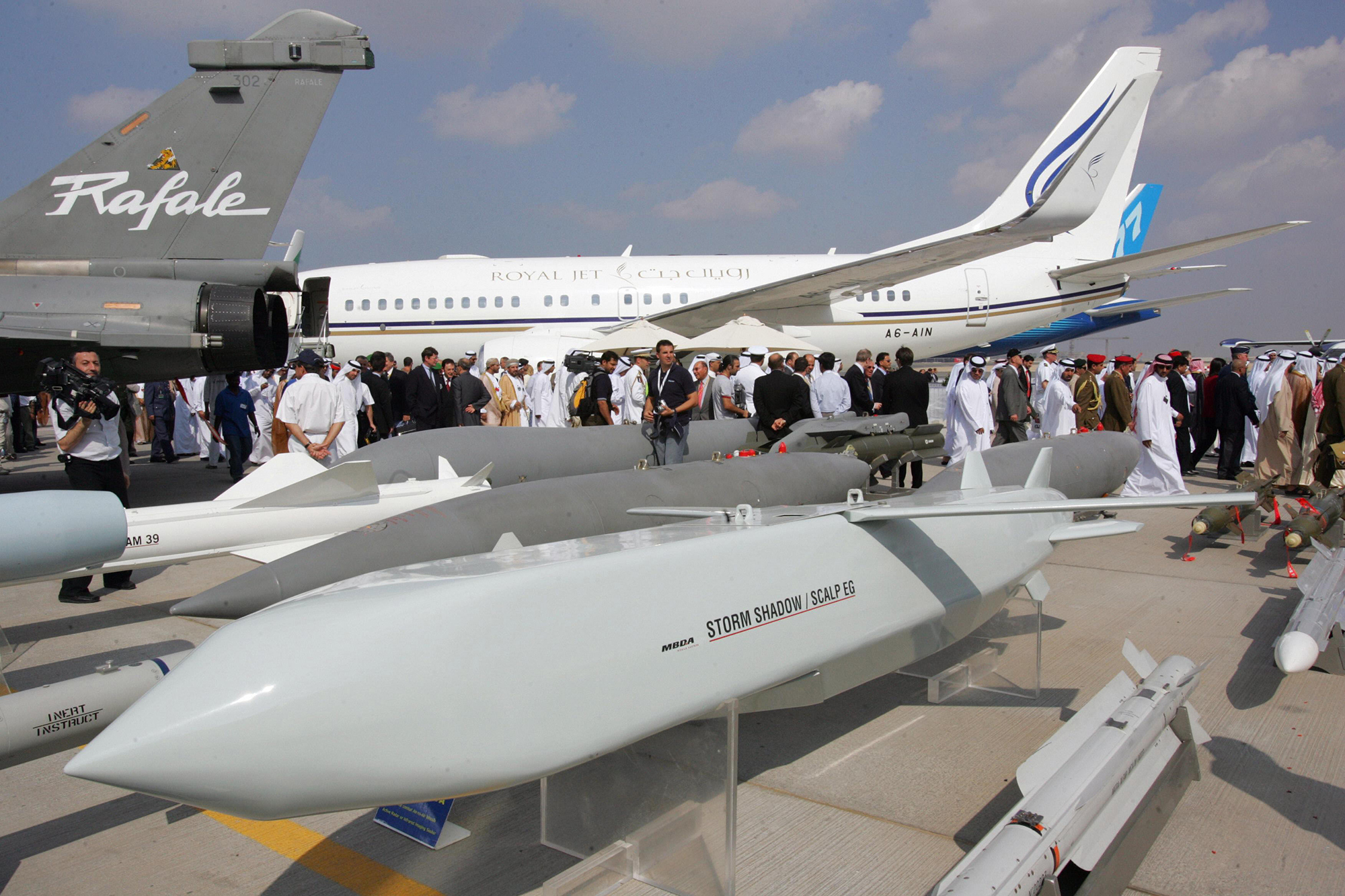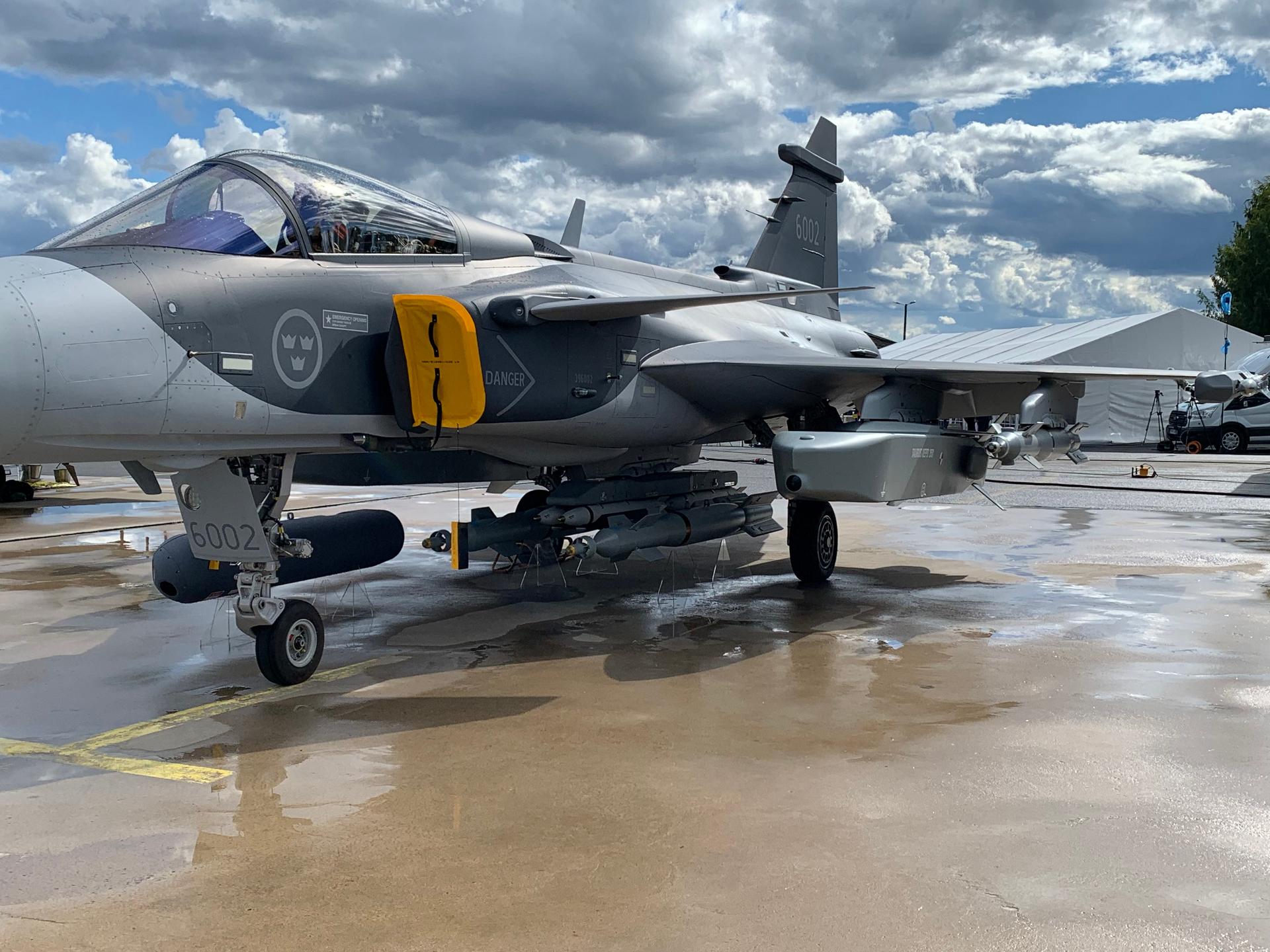У украинской армии уже есть в арсенале вооружение, которое способно бить на расстояние более 100 километров, долетая в Крым, Псков или Москву. Но этого все равно недостаточно, чтобы переломить ход войны. Какое дальнобойное оружие уже есть у Украины и какие ракеты мы еще можем получить – ниже в материале.
HIMARS и его аналог M270 стали своего рода «геймченджером» для украинской армии летом и осенью прошлого года. Они ювелирно уничтожали вражеские склады, скопления войск и техники. Это, с одной стороны, помогло остановить активное продвижение россиян на востоке. С другой – освободить большинство территории Харьковщины и правобережья Днепра в Николаевской и Херсонской областях.
Это оружие кардинально переломило ситуацию на фронте, но только на конкретном этапе войны. Тот тип снарядов к этим установкам – GMLRS, которые украинская армия получила от партнеров, ограничен в дальности стрельбы 85 километрами. И если в прошлом году HIMARS уничтожали боеприпасы к российской артиллерии, то сейчас они уничтожают саму российскую артиллерию. Ими теперь сложнее доставать до вражеских тылов. Оккупанты перестроили свою логистику подальше от зоны поражения этих систем.
Чтобы представить масштаб: от украинских позиций до приграничных районов Луганской области на восток – около 150 километров, от правобережья Херсонщины до юга Крыма – ориентировочно 280, от подконтрольной нам территории в Запорожской области до Керчи – примерно 250. Следовательно, для того, чтобы выбивать противника, нашим войскам теперь нужно оружие, которое стреляет и дальше, и сильнее.
Украинские разработки
Почему Украина просит дальнобойное вооружение именно западного, а не советского образца? Не потому, что западное – это обязательно значит более современное. Дело в том, что номенклатуры, которые могли бы сейчас оставаться в дружественных нам странах бывшего Варшавского договора – это разве что «Точка-У» , говорит эксперт информационно-консалтингового агентства Defense Express Иван Киричевский. Дальность этих комплексов достигает 120 км. Неизвестно, передавали ли нам их партнеры или нет, однако не раз в соцсетях оккупанты жаловались, что по ним якобы прилетали именно эти ракеты.
По данным Международного института стратегических исследований, который составляет ежегодный обзор The Military Balance, на 2021 год у украинской армии было 90 установок ТРК «Точка» и 800 ракет к ним. Опять же, непонятно, в каком они были состоянии, но массового применения на фронте этих комплексов с нашей стороны не фиксируется. Известно, что 25 февраля 2022 года «Точкой» нанесли удар по российскому военному аэродрому Миллерово в Ростовской области.

С советскими авиационными ракетами ситуация еще хуже – причем в целом на складах по всей Восточной Европе. Как объяснил Киричевский, еще до 2010 года у Украины было до сотни старых советских ракет Х-59 с дальностью стрельбы 45-110 километров, но затем они были списаны. Такими ракетами россияне обстреливали наши нефтебазы весной 2022 года.
С начала широкомасштабной агрессии украинский ВПК работает над собственными разработками. Однако представители военно-оборонных органов по понятным причинам предпочитают раскрывать об этом минимум информации или не раскрывать ее вообще. Еще до вторжения были заявления о разработке комплекса ОТРК «Гром-2/Сапсан» с баллистическими ракетами на 500 километров, который мог бы стать украинским «Искандером», однако куда зашел этот наш отечественный проект до сих пор неизвестно.
Министерство обороны Британии в конце августа отметило, что украинские военные, вероятно, могли переоборудовать зенитные ракеты С-200 и использовать их в качестве наземной баллистической ракеты. Такая информация «гуляла» по сетям еще где-то за два месяца до этого сообщения. К примеру, в июле российское командование заявляло, что во время одного из ударов по Крымскому мосту была запущена именно такая ракета. Загадкой остается ее возможная дальность поражения, на разных ресурсах можно встретить оценки от 260 до 600 километров.

В открытых источниках также было немало сведений о том, что наша армия применяла против россиян на оккупированных территориях комплекс «Вільха-М». А по данным портала The Warzone, Украина якобы возобновила производство ракет к этой системе и модернизирует их для стрельбы на дальность до 150 километров.
Это издание также писало о том, что наш ОПК начал производить ракеты «Нептун» для ударов по наземным целям, находящимся в радиусе до 400 километров. И вероятно, что недавно они уже прошли испытания в боевых условиях. Противокорабельная версия этой ракеты, которой весной прошлого года поразили крейсер «Москва», может уничтожать цели с дальностью до 300 километров.
Неделю назад Владимир Зеленский заявил об еще одном варианте украинского дальнобойного оружия. По словам президента, цель была поражена в 700 километрах. Учитывая, что такое сообщение появилось на следующий день после атаки на аэродром в российском Пскове, можно предположить, что речь идет об успешном применении отечественных дронов-камикадзе. Первым известным «налетом» украинских беспилотников на территорию России стали атаки на аэродромы стратегической авиации «Дягилево» и «Энгельс» в декабре 2022 года. Тогда, как недавно признали в ГУР, удары наносились с помощью переработанных советских беспилотников Ту-141 «Стриж».
.jpeg)
NYT со ссылкой на собственные источники написало, что Украина разрабатывает сразу несколько моделей БПЛА с дальностью 1000 километров. Поскольку новости об атаках дронов на Россию мы видим почти каждый день, похоже, что эти разработки продвигаются достаточно успешно.
«Если говорить об ударных беспилотниках, то Украина в буквальном смысле впереди всего мира. Этой весной Великобритания заявляла, что собирается передать нам партию дронов-камикадзе на 200 километров, тогда это воспринималось как долгожданное событие. Непонятно, что с этой историей, но тем временем мы произвели свои аналоги «шахедов». Даже тот беспилотник, который летает на Москву, под условным названием «Бобер» по своим характеристикам (что признавали и сами россияне) лучше, чем Shahed-131″, – рассказал Киричевский.
В конце концов, чтобы выйти на технологический уровень для разработки Shahed-136, Ирану понадобилось два десятка лет, а на саму разработку этого дрона – не менее пяти. То есть Украина в этом смысле движется даже быстрее, чем можно себе представить, отметил эксперт. Однако ударных беспилотников самих по себе недостаточно, какими бы современными они ни были – ни их скорость, ни их боевая нагрузка не может сравниться с современными далекобойными ракетами.
Западное оружие: что есть и что может получить Украина
Именно по этим причинам Украина уже многие месяцы ведет переговоры с партнерами о получении западных ракет, которые могли бы достигать дальности более 100 километров. Еще в прошлом году союзники передали нам противокорабельные комплексы с ракетами Harpoon и противорадиолокационные ракеты AGM 88 Harm. Оба образца можно назвать дальнобойными, однако они не предназначены для стрельбы по наземным целям.
Казалось, лед тронулся, когда в феврале этого года Соединенные Штаты приняли решение о передаче нам управляемых крылатых бомб GLSDB – новой разработки компаний Boeing и Saab Group. Ее можно запускать с установок HIMARS и M270, у них такой же вес боевого заряда, как у GMLRS, но увеличенная дальность – до 150 километров. Ввиду того, что на тот момент компании только запускали их производство, Украина может получить эти ракеты не раньше осени. При этом – в ограниченных количествах, возможно, несколько десятков в месяц.
По мнению Киричевского, процесс серийного производства GLSDB могла тормозить система наведения. Эти ракеты проектировались на базе авиабомбы GBU-39 (SDB), которая наводится на цель по лазерному лучу из самолета, тогда как GLSDB должна запускаться с наземной установки. И для этого нужно было тоже придумать какое-нибудь техническое решение.
Уже в мае стало известно, что Великобритания передает нам более мощные крылатые ракеты Storm Shadow/SCALP EG класса «воздух — земля». А два месяца спустя о поставке аналогичного вооружения заявила Франция. Дальность этой франко-британской авиационной ракеты в базовой модели может достигать 560 км. Но украинская армия, вероятно, получила экспортный вариант, ограниченный 250-290 километрами. Боевая часть этих ракет – около 450 килограмм. Это кратно больше, чем у наших ударных БПЛА (вес их боевого заряда не превышает 75 кг, у «шахедов» – около 50) и GMLRS до HIMARS (примерно 90 кг).

«Французы, вероятно, передали нам 50-80 SCALP. Всего у их армии было около 400 таких ракет. Фактически они передали нам до 20% своих запасов. Десять лет назад никто не думал о том, что нужно создавать большие арсеналы такого вооружения, поэтому их банально в мире немного. А передача большего количества вооружения может уже навредить собственной обороноспособности страны. Потому по миру и действует так называемая квота – одна страна не может передать другой более 25% определенного вида вооружения», – говорит военный эксперт, полковник запаса ВСУ Сергей Грабский.
Киричевский описывает схожую ситуацию и с ракетами Storm Shadow. По его словам, они были изготовлены в количестве до тысячи единиц. Но какая-то часть была использована во время кампаний в Ливии, Сирии, еще партию продали Саудовской Аравии. Франция и Великобритания могли передать нам всего по несколько десятков этих ракет.
Сейчас украинские политики, военные и дипломаты работают над тем, чтобы получить от Германии еще одну версию авиационной крылатой ракеты – Taurus. Ряд немецких СМИ ранее писал, что военно-воздушные силы ФРГ якобы уже согласились на передачу ракет, но канцлер Олаф Шольц еще ждет одобрения от США.
Общая масса боевой части в Taurus составляет 480 кг. Дальность – более 500 км, в экспортных вариантах – 300-400. Так же как Storm Shadow и SCALP, эта ракета способна лететь на очень низких высотах, огибая рельеф местности. Это позволяет им скрываться от радиолокаторов систем противовоздушной обороны. В Бундесвере есть 600 единиц Taurus. Однако депутат Бундестага от оппозиционного Христианско-демократического союза Родерих Кизеветтер отметил, что около 450 из этих ракет не готовы к применению и нуждаются в модернизации.
Киричевский отмечает, что Taurus, Storm Shadow и SCALP разрабатывались в рамках единого европейского проекта под названием Apache еще в 1980-х годах. Европейцы тогда не захотели закупать крылатую ракету у США, а вместо этого решили разрабатывать свою.
«Storm Shadow и SCALP – два типа дальнобойных ракет воздушного базирования, наиболее распространенных в Европе. У Испании есть несколько десятков Taurus, но для их передачи им все равно нужно разрешение Германии. В том, что касается Taurus, также есть другой вопрос – с чего их запускать. Штатным носителем Taurus может быть шведский Gripen. Но, похоже, что перспективы получения этих истребителей еще дальше, чем Taurus», – считает собеседник.

Истребители F-16, которые мы ожидаем получить уже в первой половине следующего года, не предназначены для пуска немецких ракет. В конце концов, в случае «зеленого света» от Берлина выход может быть таким же, как со Storm Shadow и SCALP. Для применения этих ракет украинские специалисты «оттюнинговали» отечественные Су-24, использовав пилон-переходник от ударного самолета Tornado. Вместе с F-16 Украина тоже может получить очень широкую линейку дальнобойного оружия. Это, к примеру, ракеты AGM-158 (на 360 км), SLAM-R (до 300 км) либо AIM120C-8 (на 180км).
Сугубо в теории Украина могла бы инициировать переговоры о получении ракет морского базирования SCALP Naval с дальностью 900 километров или дозвуковой крылатой ракеты Tomahawk. Но для этого оружия необходимы соответствующие носители – эсминцы, фрегаты, подлодки или крейсеры – которых у нас просто нет.
В отличие от европейских Taurus, Storm Shadow или SCALP, ATACMS не требует каких-либо дополнительных носителей или переработки существующих. Эта ракета запускается из комплексов HIMARS и M270, которые уже хорошо освоили наши воины. ATACMS – американская баллистическая ракета с дальностью поражения до 300 км и весом боевого заряда до 560 килограмм в зависимости от модификации.
Вашингтон пока достаточно сдержанно относится к идее предоставить Украине такое вооружение. Четкой аргументации ни Белый дом, ни Пентагон не приводит. Однако непублично можно услышать разные версии. Начиная нежеланием Штатов еще больше усугублять отношения с Россией. И заканчивая страхами производителя Lockheed Martin, что их оружие покажет себя недостаточно эффективно в реальных боевых условиях и эта неудача обрушит их акции. Однако самая вероятная причина, почему нам все еще не передают ATACMS – потому что их действительно достаточно мало, считает Киричевский. Речь может идти о полутора тысячах единиц этих ракет в арсенале США.
«Хотя может быть и другая причина – они очень старые. Они прошли два нормативных срока службы. Их нужно отремонтировать, чтобы ими можно было стрелять. Но представьте себе ситуацию, если бы американцы вышли и сказали: наши ATACMS очень старые, мы их ремонтируем. Это бы ударило по их престижу мировой сверхдержавы – лучше рассказывать об управлении эскалацией, чтобы сохранить лицо», – добавляет собеседник.
.jpeg)
Если же говорить о дальнобойных ракетах наземного базирования, то на самом деле других подходящих вариантов, кроме ATACMS, на Западе нет. Потому Украина и направляет свои усилия на получение именно этого вооружения от США. Киричевский объясняет, что до 2019 года формально действовал Договор о ликвидации ракет средней и малой дальности, заключенный между Советским союзом и США. На него ориентировались и другие игроки европейского континента. Согласно этому соглашению страны обязывались прекратить производство и ликвидировать свои ракеты наземного базирования с дальностью от 500 до 5500 километров.
«Договор работал до тех пор, пока россияне не построили «Искандер-К» с 1500 километрами и малые корветы для «Калибров». Сейчас в российском флоте большинство ракетоносителей – это малые корветы. Эти корветы – это также способ обхода этого договора о РСМД, поскольку такие малые корветы могут перемещаться и по внутренним водным путям России, например, по Волге», – отметил Киричевский.
Именно действием этого Договора и недооценкой угроз объясняется то, почему Запад не работал на производством наземных ракет и в целом имеет не так много дальнобойного вооружения, которое мог бы предложить. Поэтому задача Украины на обозримое будущее – добиваться того оружия, которое союзники еще могут потенциально передать, но тем временем продолжать интенсивную работу над собственными проектами на более далекую перспективу.


